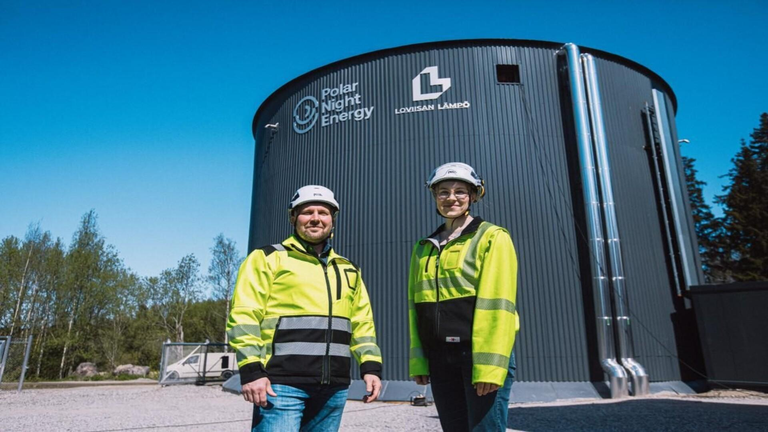Europe Switches On World’s Largest Sand Battery, Cutting CO₂ by 70%
Finland has just powered up the world’s largest sand battery in the town of Pornainen, marking a major leap forward in clean energy storage and heating. This industrial-scale system, developed by Finnish startup Polar Night Energy, stores surplus electricity—primarily from renewable sources—in crushed soapstone, a byproduct from fireplace manufacturing. The stored heat is later distributed through the local district heating network, significantly reducing reliance on fossil fuels and cutting CO₂ emissions by nearly 70%.
The battery works by using electric heaters to warm around 2,000 tonnes of crushed soapstone to temperatures of up to 600°C. At full capacity, it can deliver 1 megawatt of thermal power and store up to 100 megawatt-hours of heat. That’s enough to provide heating for a month during the summer or roughly a week in the winter. The stored energy is then transferred to water-based district heating systems, supplying warmth to homes, municipal buildings, and even the local swimming pool.
In terms of environmental impact, the battery eliminates the need for oil and reduces the use of wood chips by around 60%, while maintaining a biomass boiler solely as a backup. Annually, it prevents the release of around 160 tonnes of CO₂-equivalent emissions. Economically, it taps into Finland’s electricity market—where prices can be as low as €0.08 per kilowatt-hour—allowing for cost-effective energy storage and grid balancing.
The project is also a model of circular economy and cross-sector collaboration. It makes use of industrial waste materials, is operated by district heating company Loviisan Lämpö (part of CapMan Infra), and is digitally optimized using AI from telecom provider Elisa. Support also comes from the local municipality and soapstone producer Tulikivi. Polar Night Energy is now eyeing international expansion and is piloting systems that can convert thermal energy back into electricity, further broadening the technology’s potential.
This innovation is a significant milestone in sustainable energy. Sand batteries are affordable, durable, and scalable, making them an ideal solution for bridging gaps in renewable energy production—especially in colder climates where heating is a major emissions source. With minimal energy loss and low material costs, they represent a promising path toward decarbonizing heat, one of the most challenging sectors to electrify.
Could sand batteries be a viable alternative to lithium-ion storage for other countries struggling with energy storage and heating demands?

https://www.reddit.com/r/Finland/comments/1lk4pce/finland_switches_on_worlds_largest_sand_battery/
https://www.reddit.com/r/eutech/comments/1ll9vep/europe_switches_on_worlds_largest_sand_battery/
This post has been shared on Reddit by @tsnaks, @davideownzall through the HivePosh initiative.